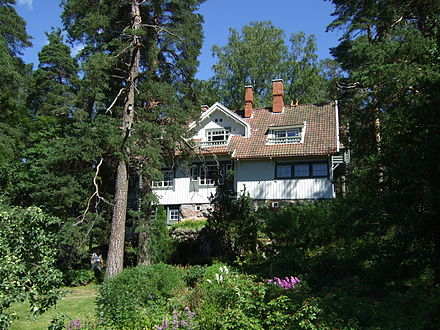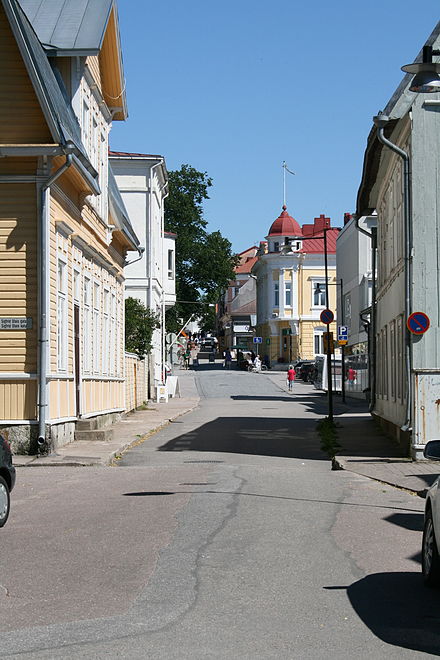Uusimaa - region of Finland
Uusimaa (Swedish:Nyland) is a region along the coast in Southern Finland, with hundreds of islands, some big lakes and inland countryside. The Finnish capital Helsinki is in central Uusimaa.
Regions
East Uusimaa
A quite flat region with farmland and two notable cities, Porvoo and Loviisa. The former is founded in the Middle Ages and is one of the oldest cities in Finland with a wooden old town that is particularly pleasant in the summer, while Loviisa was founded as a Swedish fortress during the 18th century with old bastions and is also notable for its nuclear power plant. Another sight is the historical ironworks of Ruotsinpyhtää/Strömfors, administratively part of Loviisa. Moreover, there are smaller towns with minor attractions. In eastern Uusimaa you can also find two world heritage listed points on the Struve Geodetic Arc – one in the forest and another one on an island.
- Askola 📍, a rural municipality on the river Porvoonjoki
- Myrskylä 📍 (Mörskom), a rural municipality with the lake Kirkkojärvi
- Lapinjärvi (Lappträsk), inland municipality with the lake Lapinjärvi and one of the Struve points
- Loviisa (Lovisa)
- Pornainen
- Porvoo 📍 (Borgå) with an old town renowned for its beauty.
- Pukkila
- Sipoo 📍 (Sibbo), skiing possibilities and a nice archipelago, with cruises and opportunities for sailing and canoeing
Capital Region
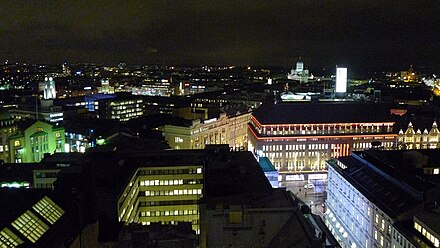 The Capital Region (Finnish: pääkaupunkiseutu, Swedish: huvudstadsregionen) is home to around 1.2 million inhabitants and by far the largest urban area in the country and is a hub for all kinds of traffic, so also many people heading elsewhere pass through the capital region. There are a great number of things to see here, including the Empire style buildings in central Helsinki, buildings in modern style from functionalism to glass-and-steel skyscrapers and two medieval churches and the world heritage listed fortress Suomenlinna (even as old buildings aren't as prominent here as in eastern or western Uusimaa). Historical things and events, on the other hand, can be experienced in the many museums and galleries. The region also hosts many event venues and outdoor events with something for everyone from concert halls to food festivals. Almost all of Finland's very largest shopping malls are here, which together with the shops in downtown Helsinki make up the greatest selection of different shops in the country, and unsurprisingly you can also find countless restaurants representing all major cuisines in the world and plenty of places to drink and sleep. Not everything is man-made, though, nature is around the corner with two national parks and other green areas.
The Capital Region (Finnish: pääkaupunkiseutu, Swedish: huvudstadsregionen) is home to around 1.2 million inhabitants and by far the largest urban area in the country and is a hub for all kinds of traffic, so also many people heading elsewhere pass through the capital region. There are a great number of things to see here, including the Empire style buildings in central Helsinki, buildings in modern style from functionalism to glass-and-steel skyscrapers and two medieval churches and the world heritage listed fortress Suomenlinna (even as old buildings aren't as prominent here as in eastern or western Uusimaa). Historical things and events, on the other hand, can be experienced in the many museums and galleries. The region also hosts many event venues and outdoor events with something for everyone from concert halls to food festivals. Almost all of Finland's very largest shopping malls are here, which together with the shops in downtown Helsinki make up the greatest selection of different shops in the country, and unsurprisingly you can also find countless restaurants representing all major cuisines in the world and plenty of places to drink and sleep. Not everything is man-made, though, nature is around the corner with two national parks and other green areas.
- Helsinki 📍 (Helsingfors), the capital city, has its frills. Check the dedicated article.
- Espoo 📍 (Esbo), a big city west of Helsinki, consists of many smaller centres that interweave. Espoo hosts the Nuuksio National Park and even a combined ski center and tropical spa that expands into a water park in the summer time. Both attractions are served by bus.
- Vantaa 📍 (Vanda) to the north of Helsinki has ample services and shopping opportunities by the newly opened airport ring railway with trains I and P circling in opposite directions.
- Kauniainen 📍 (Grankulla) is a tiny wealthy city completely enclosed in Espoo. U and E trains stop here.
Northern Uusimaa
The cities and towns here are relatively new and have grown up with the railways and industrialization since the late 18th century. However, the region around Tuusulanjärvi (Järvenpää and Tuusula) was a countryside getaway for artists and authors central to the Finnish culture in the early 20th century, a forming time for the soon independent Finland, and many of their homes have been turned into museums. Otherwise the northern central part of Uusimaa has rather few attractions and is probably the least visited part. Many people do pass through, though, on roads and rails. There are a couple of minor natural attractions, but like most of Finland a lot of nature to be freely explored.
- Hyvinkää 📍 (Hyvinge)
- Järvenpää 📍 (Träskända)
- Karkkila (Högfors)
- Kerava 📍 (Kervo)
- Mäntsälä
- Nurmijärvi 📍 and its largest urban area Klaukkala 📍
- Tuusula 📍 (Tusby)
- Vihti
West Uusimaa
Like eastern Uusimaa, the towns in the region have also grown up along the King's Road (Finland), and as such you can find some historical churches and ironworks here. The region is hillier than the rest of Uusimaa as the Salpausselkä ridge system passes through it all the way down to Hanko, and there are also a number of lakes here, most notably Lake Lohja (Lohjanjärvi) with a landscape reminiscent of the Finnish Lakeland. Further down the Hanko peninsula, on the other hand, the landscape with its sand banks and pine trees is reminiscent of the coasts of the Baltic countries or southern Sweden, moreover Western Uusimaa is notable for its archipelago. The region has seen some war action throughout the centuries, including both world wars, and there are sites related to these. Here you can also visit a medieval castle, the Raseborg castle.
- Kirkkonummi 📍 (Kyrkslätt) is west from Espoo also has rail service connecting to Helsinki. Y-train as well as many Intercity stop here and Kirkkonummi is the terminus of the U-train.
- Ingå 📍 (Inkoo) and Siuntio 📍 (Sjundeå) are on the King's Road and both have rail connection in form of Y-train to Helsinki
- Lohja 📍 (Lojo) by the lake Lohjanjärvi is a trading hub of the western Uusimaa since the Middle Ages. Widespread apple growing has led to the apple being associated with Lohja. Frequent and inexpensive bus services run from Helsinki throughout the day and late into night. Attractions in Lohja include a deep mine with museum and the lake with surrouondings.
- Raseborg 📍 (Raasepori) consists of the towns Karis 📍 (Karjaa), a travel nexus 1 hr by train from Helsinki, and Ekenäs 📍 (Tammisaari), both of which are administrative centres, and Pohja 📍 (Pojo) with its historic Billnäs ironworks. Ekenäs has an old town as well as modern buildings designed by Alvar Aalto and a beautiful waterfront marina a 12-minute train ride from Karis towards Hanko. The village of Fiskars 📍 is also an interesting year around destination 20 minute bus ride north from Karis. Also in Pohja is Finland's southernmost ski centre Påminne.
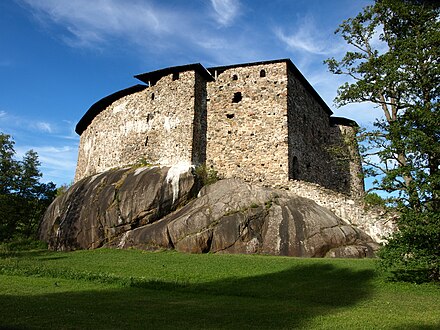
- Hanko 📍 (Hangö) is an old port and marina town at the tip of the Hanko peninsula and is a year-to-year favourite with domestic holiday makers due to its good weather, excellent beaches, lots of lodging capacity and services operate in the summertime.
Other destinations
- Ekenäs Archipelago National Park in Raseborg
- Karkali Strict Nature Reserve 📍 – a nature reserve on a peninsula in Lohjanjärvi, including the largest limestone cave in Finland.
- Nuuksio National Park 📍 in Espoo
- Sipoonkorpi National Park 📍 in Sipoo
Understand
Talk
The coastal areas are traditionally Swedish speaking. The capital region has drawn much people from elsewhere, so the Swedish speaking are nowadays mostly a minority (3–9 % in Helsinki, Espoo and Vantaa, about half in most other coastal municipalities). The inland is Finnish speaking.
Get in
If you are arriving in Finland by air or sea you will likely arrive in Helsinki, where the largest airport and several major harbors are located.
Nearly all passenger airports in Finland have a flight to [Helsinki Airport](https://www.finavia.fi/en/airports/helsinki-airport)[ 📍](https://www.google.com/maps?ll=60.320,24.968&q=60.320,24.968&hl=en&t=m&z=11) (for many of them it is the only destination), Helsinki is one of Europe's busiest passenger port cities, and most longer train lines of Finland end there. Direct buses connect it with all larger cities in the country, and to get there from the smaller ones you would usually have to transfer just once. For other destinations in Uusimaa trains and buses usually stop on their way to Helsinki in cities along the route; it is for instance possible to get off in Porvoo if you're coming from east or in Järvenpää if you're coming from north – otherwise you would most likely need to transfer in Helsinki.
A few European roads lead to Helsinki: E12 leads from Norway's coast through Vaasa; E18 comes in from Stockholm in the west and from Saint Petersburg in the east; E67 (Via Baltica) ends in Tallinn, with several car ferries to Helsinki; E75 comes in from northern Norway and continues south-west by a non-existent ferry connection.
Get around
Again, Helsinki is the hub of the region and there is generally no form of public transportation bypassing the city.
Trains of VR can be used for some routes. Regional trains (operated by VR on behalf of the metropolitan cities) extend to most of the region, serving Kerava, Järvenpää, Mäntsälä and Hyvinkää in the north and Espoo, Kauniainen, Kirkkonummi, Siuntio, Raseborg and Hanko in the west. On the regional trains there is no ticket sale, on long-distance trains ticket sale has been suspended during the COVID-19 pandemic (as people should know their seat when boarding).
There is a dense bus network covering most of the province. There are at least a couple of buses a day from Helsinki to every town and municipal centre. Timetables and tickets can be got from Matkahuolto or HSL, and from the individual companies.
Google Maps includes timetables of trains, long-distance buses and local transport of many cities and towns. Other useful route planners are Opas.matka.fi for trains and local buses and Matkahuolto Reittiopas for regional buses.
The national roads 1–7 ray out from Helsinki through Uusimaa, with national road 1 going westward to Turku and national road 7 eastward towards Vyborg and Saint Petersburg. The are motorways near Helsinki, some all the way. Some towns are served by minor highways, such as by road 51 going westward along the coast.
Boating and kayaking in the coastal archipelago is popular. There are a few coastal cruise lines, such as from Helsinki to Porvoo and the lighthouse island Söderskär, from Ekenäs to the Ekenäs Archipelago National Park, from Hanko to the lighthouse island Bengtskär and from most coastal municipalities to islands in the archipelago off their coast.
By taxi
- Lähitaksi, +358 100 7300 (extra charge: €1.92+€2.5/min+pvm). Traditionally the main taxi dispatch service in the capital region outside of Helsinki. Smartphone app: Taksini Daytime M–Sa €3.90+€1/1.45/km+0.90/min, nights and holidays €7.90+1.05/1.55/km+0.99/min; prebooking €7/14; the lower km and prebooking fees for 1–4 persons 2020-07-09
- Menevä Uusimaa. Order per phone, web or app. Price calculator. €5/7+€0.90/1.60km+0.90/min; the lower fee for 1–4 persons; min fee for 5–8 persons €20; prebooking free 2020-07-09
- iTaksi, +358 10-212-0000 (high cost?), info@itaksi.fi. Smart phone app offers address based routing and calculates price according to them. €4.00/6.00+€0.90/km+€0.85/min 2021-01-10
- Smartphone apps: Valopilkku, 02 Taksi, Taksini
See
East Uusimaa
- Porvoo Old Town
- Porvoo River (Porvoonjoki in Finnish, Borgå å in Swedish) flowing into the Gulf of Finland through Pukkila, Askola and Porvoo
- Tornikallio, 60.704722°, 26.003333°. One of the points on the world heritage listed Struve Geodetic Arc. From the Porlammi–Myrskylä road follow the signs to the parking lot, then it's first 200 m backtracking along the road and about 400 m of hiking uphill; probably not a good idea in the winter. There are nice views over Lake Pyhäjärvi, although at the point where the UNESCO marker is, it is mostly obstructed by pines. Tornikallio is 98 m ASL. 2021-04-04
Middle Uusimaa
- Suomenlinna fortress few kilometers south of Helsinki has dungeons, restaurants, short-cuts, cafés, museums, Finland's only ever submarine, Fitted to Suomenlinna church roof is a lighthouse and there is a swimming beach and a brewery. Ferry service from Market Square (Kauppatori)is operated by Helsinki Region Traffic and a normal mass transit ticket is good to go.
- Finnish Aviation Museum in Vantaa
- Finnish railway museum in Hyvinkää
- Birthplace and Home Museum of Aleksis Kivi, the national author of Finland, in Nurmijärvi
- The villas around Tuusulanjärvi (Tusby träsk), 60.441681°, 25.053248°. 2022-06-09 in Tuusula and Järvenpää, homes of several persons central to the Finnish culture in the early 20th century.
West Uusimaa
- WW2 sites along the coast between Helsinki and Hanko, the Igor museum on the Porkkala Parenthesis in Degerby
- Beaches, villas and sailing yachts in Hanko
- Old ironworks and mansions in Raseborg (Svartå, Billnäs and Fiskars)
- Lohjanjärvi (Lojo sjö), 60.244476°, 23.955897°. 2022-11-18, the largest lake of Uusimaa, in Lohja
Itineraries
- King's Road, a historic route passing through the region from west to east
- Helsinki itineraries
Do
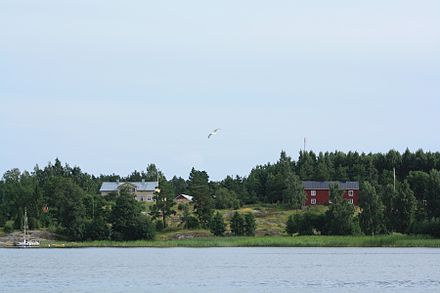
Outdooring

- Rent kayaks in Eastern Helsinki, Siuntio or Ekenäs
- Take a brief tour out in the Finnish nature at Nuuksio National Park in Espoo or at the Uutela trail in Eastern Helsinki
- Go down into the natural limestone cave of Torhola in Lohja at the Karkali nature reserve or take a swim in the lake Lohjanjärvi at one of its various public beaches.
- Enjoy summer swimming on the sandy shores of Lake Sääksi in Nurmijärvi
- Take a tour in the archipelago, e.g. with s/s Runeberg from Helsinki to Porvoo or with some other boat to a recreational area in an island
- Go skiing at Vihti ski center, Serena in Espoo, Talma Ski in Sipoo, Sveitsi in Hyvinkää or Påminne in Raseborg, the southernmost ski centre in Finland.
- Go on a guided fishing trip
- Charter a sailing boat (or rent kayaks) and cruise the archipelago
- Watch birds at Tulludden in Hanko, the southernmost tip of mainland Finland.
Funfairs and similar attractions
- Have fun at Linnanmäki amusement park in Helsinki.
- Have watery fun at Serena water park in Espoo. Bus connects from Helsinki.
- Heureka science center is a good family destination in Tikkurila, Vantaa by the main railroad track
Recreation areas
Uusimaa coast is relatively densely populated and large areas along the shore are privately owned, so sometimes visitors can struggle to find a place for recreational use. However, both the municipalities and some private foundations have recreational areas for public use.
The Association of recreation areas (sv: Föreningen Nylands friluftsområden, fi:Uudenmaan virkistysalueyhdistys) buys and leases scenic areas that are suitable for outdoor and recreational use in the Uusimaa region. These areas are often located at the coast, sometimes on islands, and are free to use for camping, BBQing, canoeing, mushroom and berry picking, swimming and other activities under the right to access. The list of the areas can be found at the Association's web page (in Finnish and Swedish only).
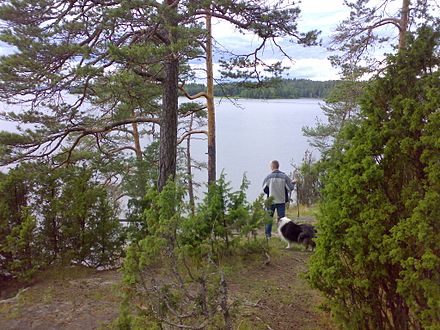
Events calendar
April
- April Jazz in Espoo's architecturally acclaimed Tapiola sub centre in early April.
May
- World Village Festival. Finland's biggest free-of-charge festival with excellent food from all over the world, organizations, discussions and of course world music on many stages. Events are in Kaisaniemi Park and Railway Square the last weekend in May.
July
- Enjoy Blues music at Europe's largest blues festival Puistoblues (.fi) (dead link: January 2023) in Järvenpää on July 2.
- Sunset Beach Party, Pyhäjärvi Beach, Karkkila. Music festival on the first weekend of July in Karkkila.
August
- Espoo Ciné is in August
Buy
Eat
Drink
Stay safe
Go next
- The Archipelago Sea and Åland to the west are known for their beauty and are accessible also by car and bicycle thanks to the ferries. There are also nice places further north up the coast.
- Mainland Finland Proper to the west and onwards to Sweden via port of Turku or through the archipelago. There is also a ferry directly from Hanko to Sweden.
- To the east Kymenlaakso
- To the north Tavastia Proper and Päijänne Tavastia
- To the south the Estonia coast is vastly different from the Finnish side and worth seeing. There are about 10 daily ferry departures from Helsinki to Tallinn (in the summer even more).
